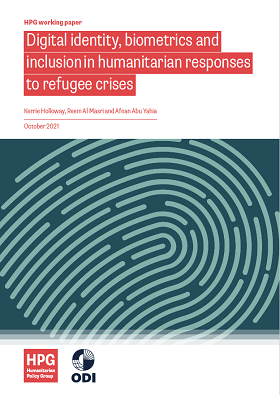Digital identity, biometrics and inclusion in humanitarian responses to refugee crises
Digital identity and biometrics have long been divisive topics in the humanitarian sector. On the one hand, they have the potential to be more inclusive and reach people in need at scale due to perceived efficiency gains. A legal identity for everyone as part of the Sustainable Development Goals (SDGs) has spurred the drive to innovation and registration, particularly in the aid and development sectors. On the other hand, serious questions have been raised around their potential for harm, particularly related to data privacy.
As the use of digital identity and biometrics continues to grow, the humanitarian sector must find ways to improve the systems that are in place and mitigate potential risks. These risks go beyond
technical failure and relate to broader issues. The addition of technology has often deepened, rather than solved, long-standing structural issues, such as the unequal power dynamics between aid giver and aid receiver, and questions of inclusion and exclusion, such as who gets to decide who is included and how these decisions are made. Due to their immutable nature, the use of biometrics has thrown up several human rights issues around choice, informed consent, privacy and data protection for
those who need humanitarian assistance, as well as highlighting wider issues around ethics and data responsibility in the sector.
Biometrics have been used to create digital identities in the humanitarian space since the early 2000s, though little research has been conducted on how end users – in this case, those who register for humanitarian assistance – understand and experience using this technology to receive aid. This report seeks to work towards filling this gap by sharing the perspectives of (mostly Syrian) refugees in Jordan on their experiences with biometrics alongside information and analysis on the larger
issues of digital identity.
This report is also available in Arabic.



